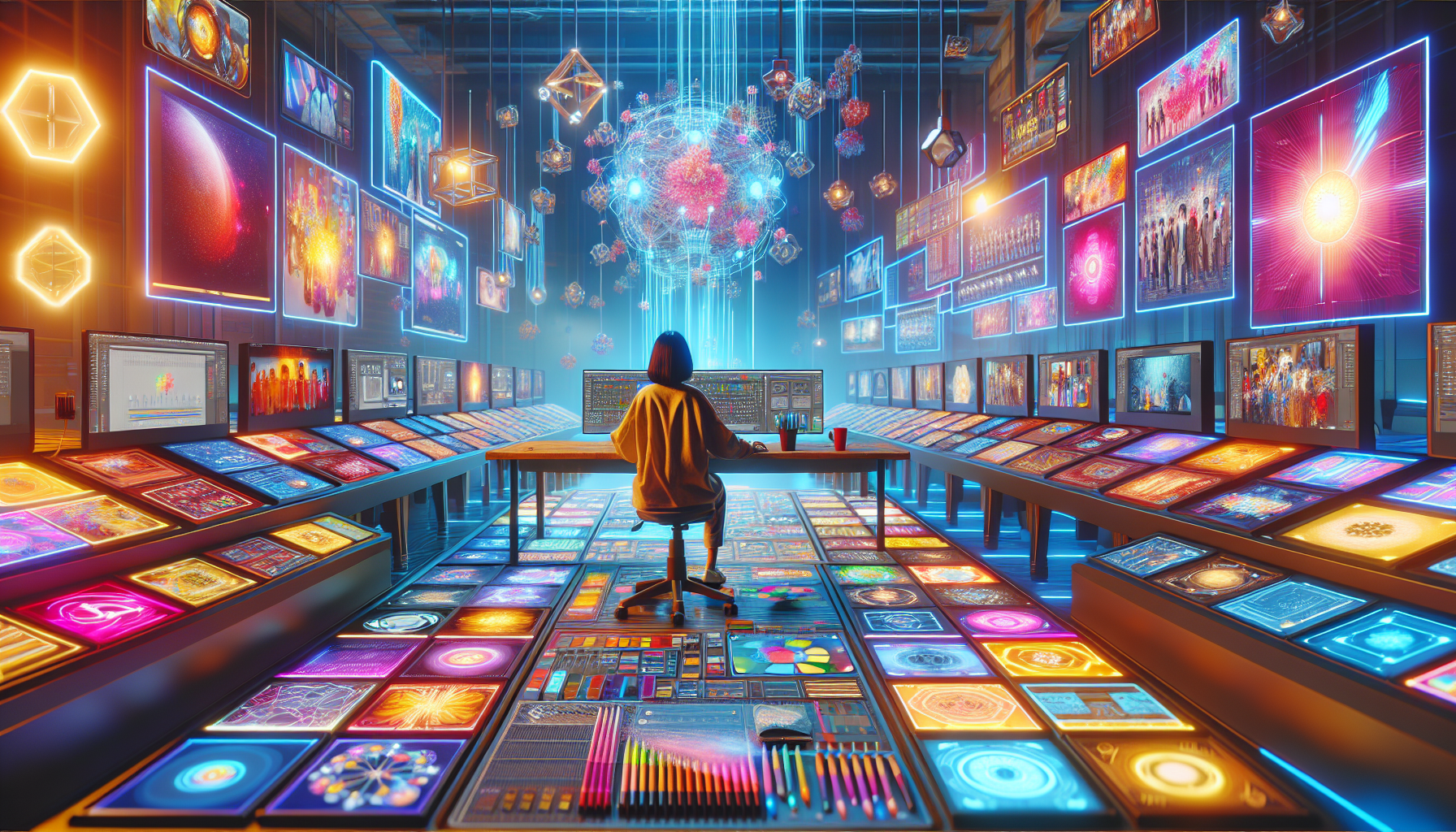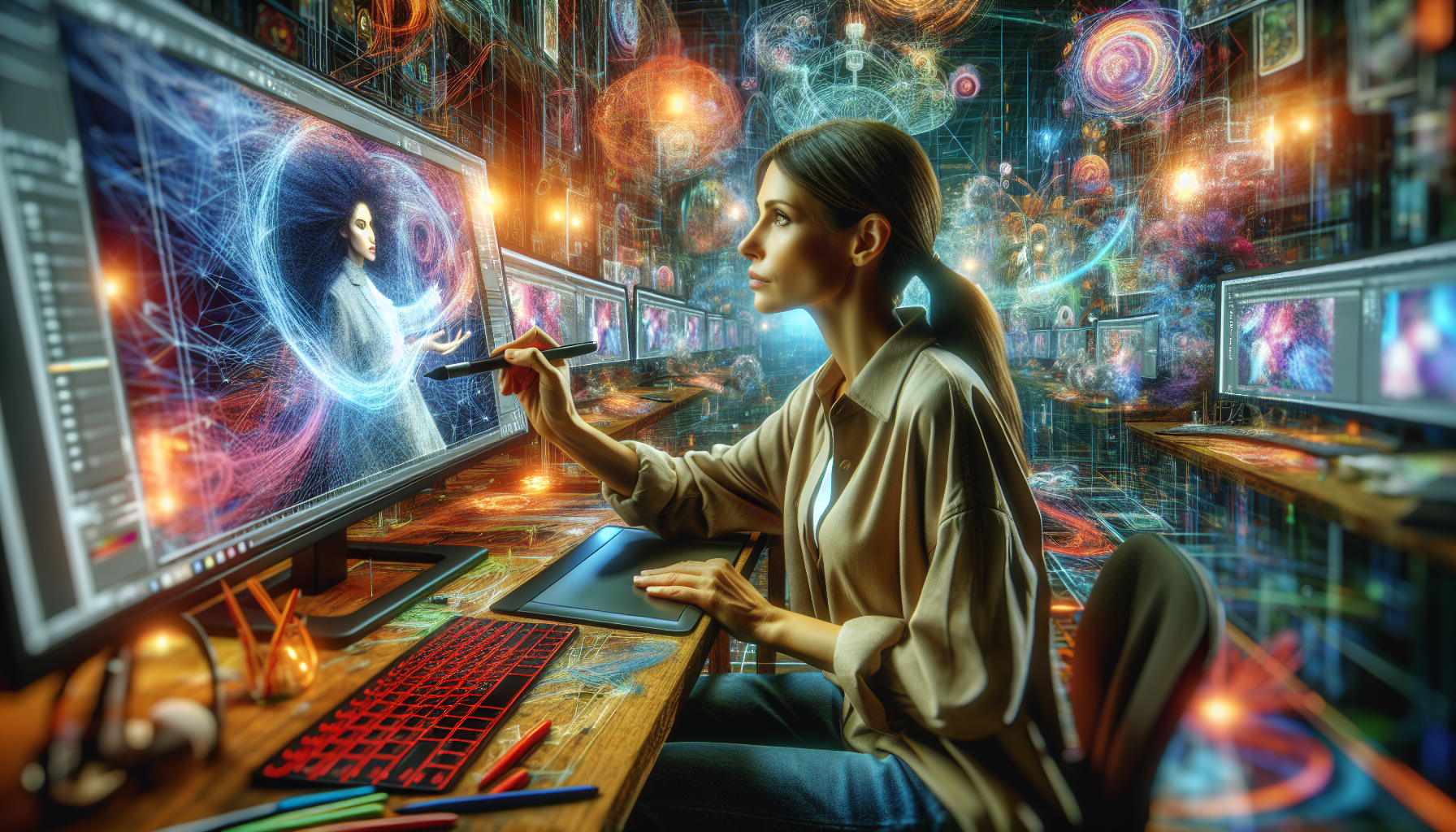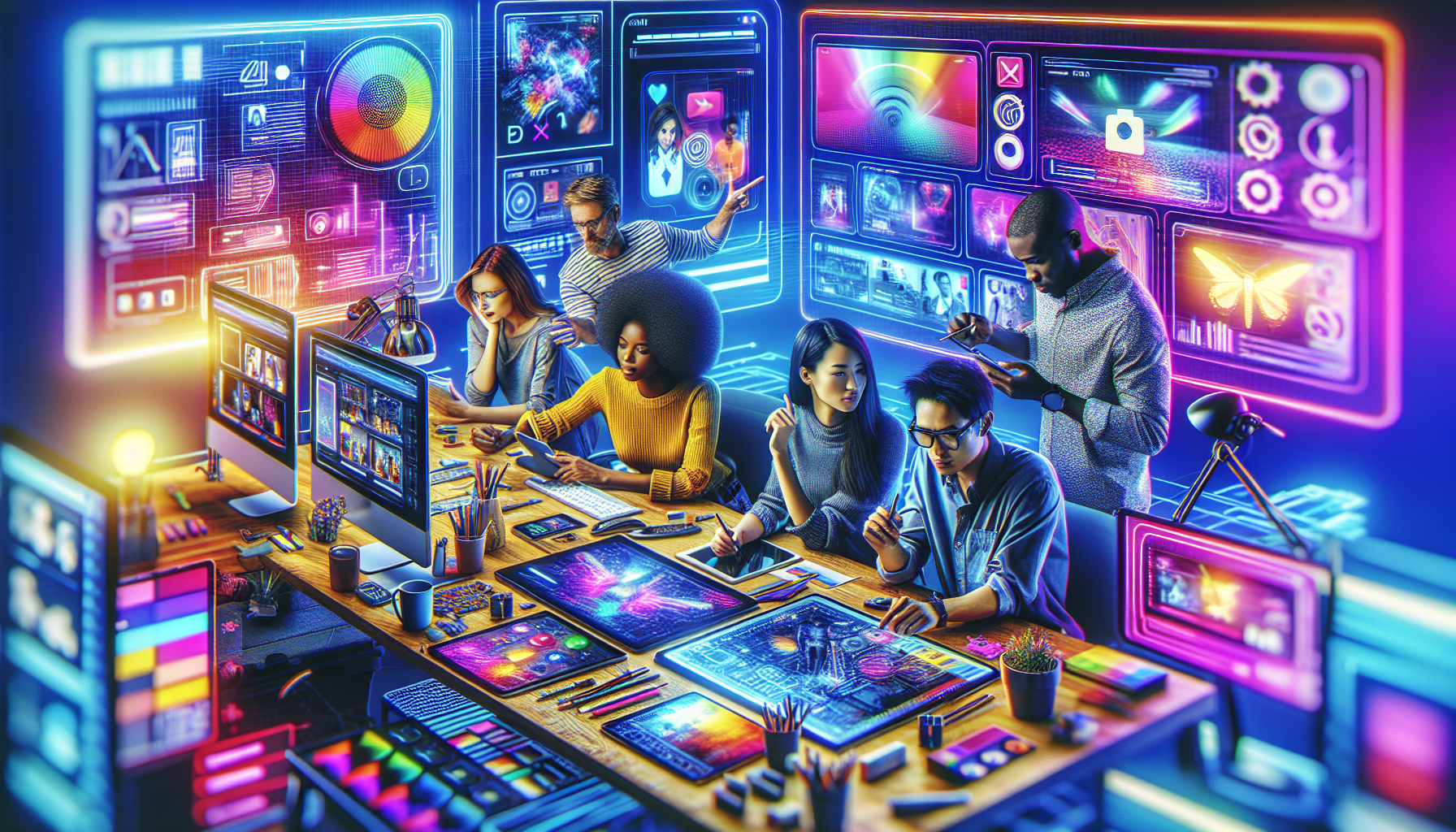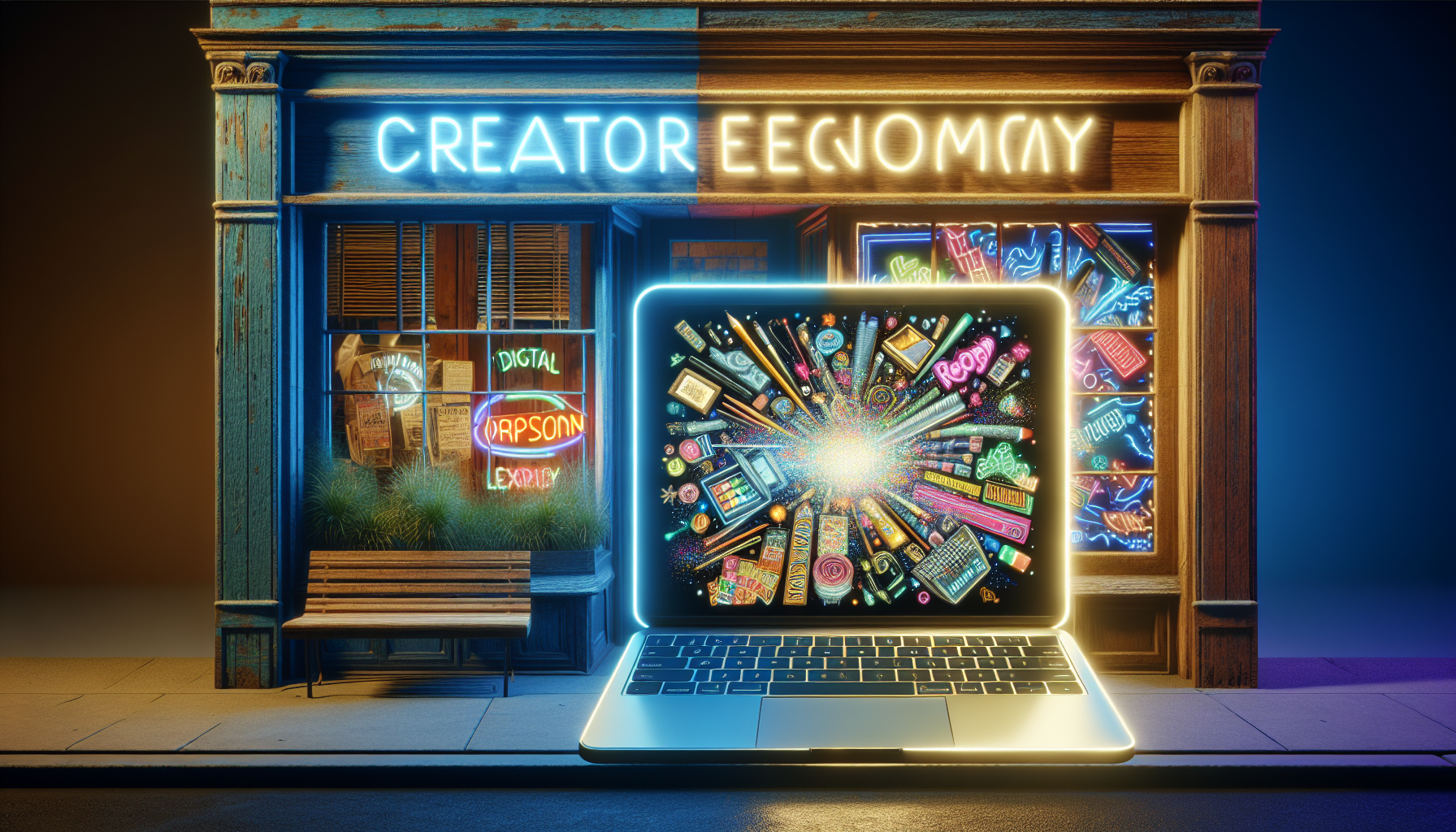
The creator economy marks a significant evolution in digital entrepreneurship, where individuals leverage digital platforms to transform their passions or skills into sustainable careers. At its core, the creator economy revolves around content creators who produce media across various platforms, directly engaging audiences and fostering communities.
Defining the Creator Economy
The creator economy is an ecosystem that empowers individuals with the tools and opportunities to craft and share content. Unlike traditional economies where large corporations dominated content creation and distribution, the creator economy decentralizes this power, allowing anyone with internet access the potential to reach a global audience. This shift has led to an unprecedented democratization of creativity, where niche interests and unique voices can thrive.
Who Are the Creators?

Creators in this economy vary widely, from YouTubers and Instagram influencers to bloggers and podcasters. They are the artists, educators, entertainers, and storytellers who utilize digital platforms to share their work. Each creator curates a personal brand, cultivates a following, and may monetize through multiple revenue streams.
The Impact of Digital Platforms
– YouTube: A pioneering force in the creator economy, YouTube offers a monetization program that pays creators through ad revenue. Creators can also earn via channel memberships, Super Chats, and merchandise shelves.
– Instagram: With its visual-centric model, Instagram facilitates brand partnerships for influencers, enabling them to earn through sponsored posts and affiliate marketing.
– Patreon: This platform allows fans to directly support creators through membership tiers, providing monthly income and a level of financial stability.
– Substack: Catering primarily to writers, Substack provides a subscription service model where authors can charge readers for access to their content.
The Broader Impact
The rise of the creator economy is reshaping notions of employment and income generation. It encourages entrepreneurship, as individuals often wear many hats, from content creator to marketer to financial planner. This shift has also led to more authentic and diverse content, as creators produce work they are genuinely passionate about, without adhering to the constraints of traditional media gatekeepers.
As the creator economy expands, it not only transforms how content is consumed and monetized but also fosters a vibrant digital culture where community engagement and personal connections are paramount. This paradigm shift emphasizes the power of the individual creator within digital entrepreneurship, establishing a dynamic and inclusive landscape that continues to evolve.
platforms driving digital entrepreneurship
Digital entrepreneurship has been revolutionized by platforms that empower creators to transform their passions into viable businesses. These platforms not only provide a space for sharing and engaging but are also integral in reshaping how modern creators interact with audiences and monetize their content.
YouTube: Catalyzing Video Content Creation
YouTube stands as a cornerstone of the creator economy. Its monetization features, such as ad revenue, Super Chats, and channel memberships, provide diverse income streams for creators. An example of its impact is MrBeast, who uses YouTube’s vast reach to generate millions through ad revenue and brand collaborations, underlining how the platform supports large-scale community engagement and financial success.
Instagram: Leveraging Visual Storytelling
Instagram excels as a hub for visual storytelling. Creators utilize its features to engage audiences with aesthetics, ultimately driving brand collaborations and sponsored content. Influencers like @humansofny have built substantial followings by sharing compelling visual narratives, leading to lucrative partnerships with brands keen on accessing their engaged audiences.
Patreon: Fostering Direct Support
Patreon distinguishes itself by offering a subscription model that strengthens creator-fan relationships. Musicians like Amanda Palmer use Patreon to gain financial backing directly from their supporters, affording them creative freedom without reliance on traditional financial models. This approach ensures a consistent income while fostering a community invested in the creator’s journey.
Twitch: Interactive and Engaging Content Creation
Twitch has become vital for live-streaming gamers and entertainers, providing tools for interactive content creation. Streamers like Pokimane utilize Twitch’s features, such as subscriptions and donations, to build substantial incomes while maintaining active viewer engagement. Twitch represents how real-time interaction can lead to community building and financial momentum in the creator economy.
Substack: Empowering Writers
Substack has emerged as a powerful platform for writers, allowing them to monetize newsletters through subscriptions. Renowned journalists and writers have shifted to Substack, leveraging its model to maintain independence while reaching targeted readers. This platform exemplifies successful digital entrepreneurship by offering an alternative to traditional media, thus enriching the creator economy with diverse, high-quality content.
Broader Impact on Digital Culture
The influence of these platforms extends beyond individual success stories. They cultivate a more inclusive digital culture where creators from various backgrounds gain the recognition and financial rewards otherwise difficult to achieve through traditional media avenues. By fostering a direct line between creators and consumers, these platforms encourage authenticity, creativity, and diversity.
In this evolving landscape, the symbiotic relationship between digital platforms and creators defines the modern era of content entrepreneurship. As these platforms continue to adapt, they will undoubtedly further the potential for innovation and success within the creator economy.
monetization strategies for creators
Creating a sustainable income from digital entrepreneurship often requires strategic monetization efforts across different platforms. As diverse as creators themselves, these strategies make use of a variety of income streams, leveraging personal skills, audience engagement, and available resources.
Ad Revenue and Sponsorships
One of the most significant monetization strategies for creators is generating income through advertisements and sponsorships. Platforms like YouTube provide monetization options through their partner programs, where creators can earn a percentage of ad revenue generated from their videos. A prominent example is YouTuber PewDiePie, who not only earns from ads but also secures brand deals due to his massive subscriber base. Sponsored content is also prevalent on platforms such as Instagram, where influencers collaborate with brands to promote products, resonating authentically with their audience.
Subscription Models
The subscription model has gained traction, thanks to platforms like Patreon and Substack. Creators can offer exclusive content to subscribers who pay a monthly fee. This model is particularly effective for creators with dedicated fan bases, as it allows for stable and predictable income. Musicians like Ben Folds utilize Patreon to offer behind-the-scenes content to subscribers, providing them with a personal touch while securing income outside traditional music sales.
Merchandising
Selling merchandise has become a popular way for creators to monetize their personal brands. Platforms like Teespring and Shopify offer seamless solutions for creators to design, promote, and sell custom merchandise directly to their fans. YouTube creators often integrate merchandise shelves beneath their videos, providing fans with a convenient purchasing experience while enhancing brand loyalty.
Live Streaming Revenue
The real-time interaction in live streaming offers multiple monetization possibilities. Platforms like Twitch facilitate revenue through viewer subscriptions, donations, and bits. Creators such as Ninja, a professional gamer, capitalize on this model, earning significant income from viewer interactions during live broadcasts. The sense of community and direct engagement enhances fan loyalty and encourages financial support.
Affiliate Marketing
Affiliate marketing serves as a viable monetization strategy, where creators earn a commission for driving sales or traffic to a company’s website. Influencers often use affiliate links in their social media bios or blog posts, promoting products they genuinely endorse. This method is particularly prevalent on Instagram and YouTube, dovetailing authentic recommendations with revenue potential.
Broader Implications
Monetization strategies for creators are transforming traditional income paradigms and fostering creativity and innovation. By customizing their paths to financial success, creators are redefining what it means to be an entrepreneur in the digital age. The diversity of strategies available ensures that creators can choose what aligns best with their content, audience, and personal brand, ultimately shaping unique and resilient entrepreneurial journeys within the creator economy.
As these strategies evolve, they underscore the fusion of creativity and commerce in the creator economy, highlighting the endless potential for individual success stories in the vast landscape of digital entrepreneurship.
challenges and opportunities
Navigating the creator economy presents both significant challenges and remarkable opportunities for digital entrepreneurs. While the allure of charting one’s own path in the digital landscape is strong, creators face numerous hurdles that require strategic navigation and adaptation.
The Complexity of Algorithms
One of the primary challenges in digital entrepreneurship within the creator economy is the complexity of platform algorithms. Creators often rely on platforms like YouTube, Instagram, and TikTok to disseminate their content. These platforms, however, are governed by algorithms that determine content visibility. The frequent updates and opaque nature of these algorithms can significantly impact a creator’s reach and engagement. For instance, many YouTubers have experienced drastic fluctuations in viewership overnight due to changes in the platform’s algorithm, affecting their revenue streams linked to ad impressions and watch time.
Monetization Pressures
Monetizing creativity poses another significant challenge. While there are diverse methods to earn income, such as through ad revenue, sponsorships, or Patreon memberships, ensuring a stable and sufficient income can be difficult. This inconsistency often leads creators to diversify their revenue streams, balancing multiple platforms and monetization methods to mitigate risks. Entertainers on Patreon, for example, may struggle with subscription churn rates, necessitating ongoing efforts to attract new patrons while retaining existing ones.
Content Saturation
The explosion of digital content creation has led to an oversaturation of media across platforms. This abundance of content makes it challenging for creators to capture and retain audience attention. With countless videos, podcasts, and blog posts uploaded daily, standing out demands unique, high-quality, and engaging content. Creators are tasked with continually innovating and adapting to emerging trends while maintaining their authentic voice and brand identity in a crowded market.
Mental Health and Burnout
The demands of digital entrepreneurship in the creator economy often impose pressures on mental health. The need to constantly create, engage with audiences, and manage a personal brand can lead to burnout. Moreover, the public scrutiny and trolling that some creators experience on social media can exacerbate stress and anxiety. High-profile cases, like those of popular streamers and vloggers who have taken breaks due to mental health concerns, highlight the importance of balanced workload and well-being strategies.
Opportunities for Niche Markets
Despite these challenges, the creator economy offers unparalleled opportunities, particularly for niche markets. The decentralization of traditional media channels allows creators to connect with specific audiences that are passionate about specialized interests. A gamer streaming vintage video games or a chef focusing on vegan desserts can cultivate dedicated, loyal followings. These niche communities often provide strong, engaged audiences, leading to more effective monetization opportunities.
Innovation Through Technology
Technological advancements continuously open new avenues for creativity and engagement. Augmented Reality (AR) and Virtual Reality (VR) tools are emerging as transformative technologies within the digital entrepreneurship realm. Creators leveraging such innovations can offer immersive experiences that differentiate their content and attract tech-savvy audiences eager for cutting-edge experiences.
Global Reach
The global nature of digital platforms provides creators with unprecedented reach, allowing them to tap into international audiences. This opportunity for expansion means that successful content can transcend geographic boundaries, offering potential collaborators and partners from around the world. The growth of non-English speaking creators on platforms like YouTube signals the creator economy’s vast global potential.
As creators navigate the digital entrepreneurship landscape, balancing the challenges with opportunities is crucial for sustainability and growth. By leveraging technology, focusing on niche markets, and maintaining authentic connections with audiences, creators can thrive, reshaping both their careers and the broader digital culture in the process.
the future of the creator economy
As digital entrepreneurship continues to evolve, the creator economy stands at the forefront of this transformation, poised for significant growth and innovation. The dynamic intersection of technology and creativity offers an exciting glimpse into what the future holds for content creators and the platforms that support them.
Emerging Technologies and Their Impact
The future of the creator economy will be heavily influenced by emerging technologies that enhance how creators produce and share content. Virtual Reality (VR) and Augmented Reality (AR) promise to revolutionize storytelling and engagement by offering immersive experiences that captivate audiences in entirely new ways. Creators like VR artists and interactive storytellers are already exploring these technologies to create captivating worlds that audiences can inhabit, providing a more profound and personal connection to content.
Additionally, advancements in artificial intelligence (AI) are set to streamline content creation and distribution. AI-powered tools can assist creators in generating content ideas, editing videos, and personalizing interactions, allowing more time to focus on creative strategies. For example, AI-driven platforms like Jasper AI assist writers in developing engaging posts more efficiently, further enhancing productivity in the creator economy.
Diversification of Monetization Models
As the creator economy matures, diversification of monetization models will be crucial. Subscription services, digital merchandise, and tokenized content using blockchain technology are expected to gain prominence. Non-fungible tokens (NFTs) present unique opportunities for creators to sell exclusive digital assets, from artworks to music, providing fans with ownership and investment in creators’ works. This model offers a new revenue stream and strengthens the bond between creators and their communities by offering unique, collectible content.
Moreover, microtransactions and fan-driven revenue models will continue to evolve. Platforms like OnlyFans and Cameo illustrate how creators can offer personalized content directly to fans, bypassing traditional media outlets and monetizing personal connections. These direct interactions and financial exchanges bolster creators’ autonomy, allowing them to chart their paths within the creator economy.
Increased Creator Support and Community Building
The future of the creator economy will also see enhanced support systems for creators, emphasizing community building and mental health. As the landscape grows more competitive, platforms are increasingly investing in creator support initiatives. Tools for mental health management, educational programs on sustainable growth, and resources on digital entrepreneurship are becoming integral to platform offerings. Creators are likely to benefit from workshops and networking opportunities that focus on entrepreneurship skills, content strategies, and audience engagement.
Communities built around shared interests will flourish, with platforms fostering spaces where creators and audiences can interact more intimately. This community-centric model encourages collaboration, peer support, and collective growth, positioning creators as vital components of vibrant digital ecosystems.
Cross-Platform Synergies and Collaborations
Finally, future trends in the creator economy will emphasize cross-platform synergies and collaborations. As digital platforms evolve, creators will increasingly harness the complementary strengths of various platforms to expand their reach and income potential. A creator might leverage the visual appeal of Instagram, the video-sharing power of YouTube, and the direct fan engagement on Patreon to maximize their presence across channels. Collaborative projects between creators across different niches will further enrich content diversity, drawing combined audiences and fostering innovative ventures.
In summary, the creator economy’s future shines brightly, driven by technological advancements, diversified monetization strategies, enhanced support systems, and cross-platform collaborations. As creators continue to harness these shifts, they will not only redefine digital entrepreneurship but also shape the landscape of digital culture, creating a vibrant, interconnected world that champions creativity, innovation, and community.

